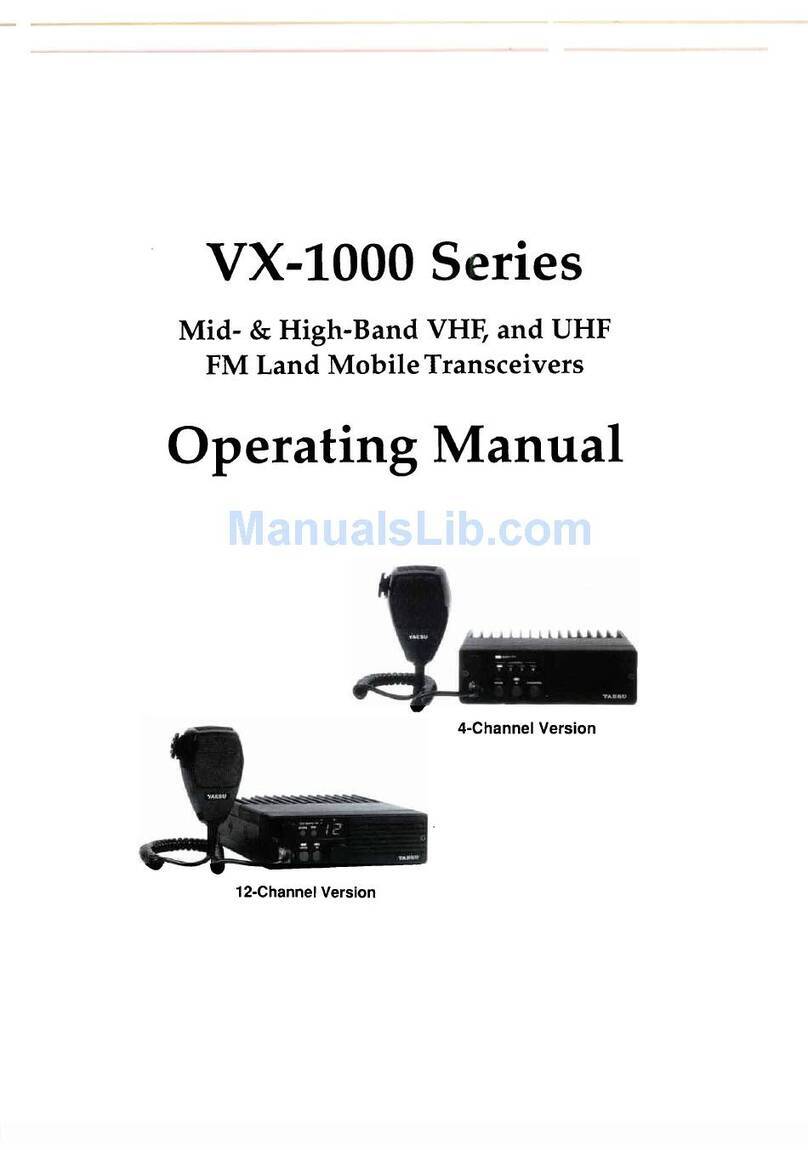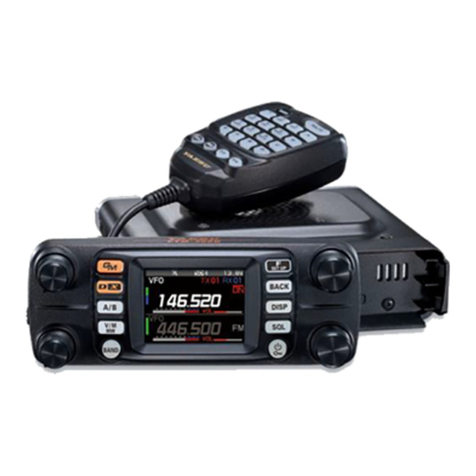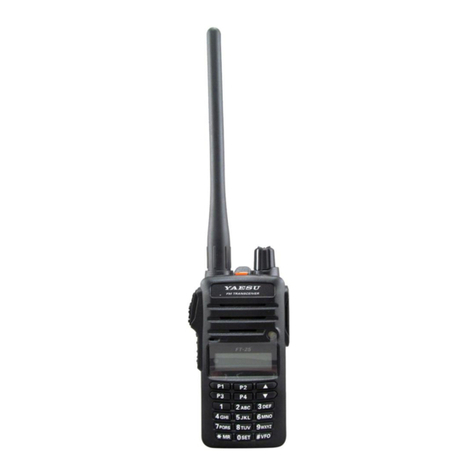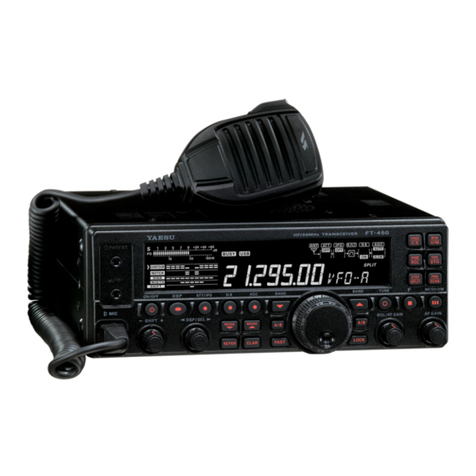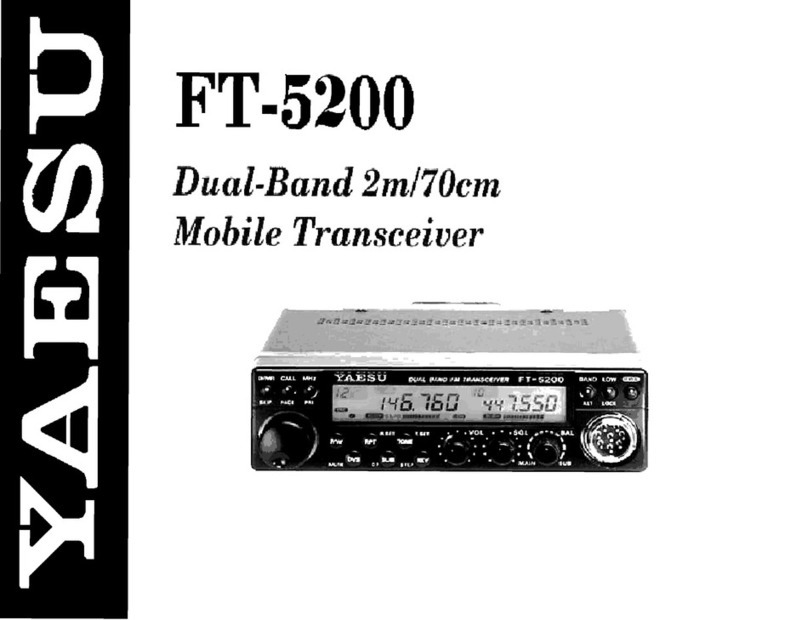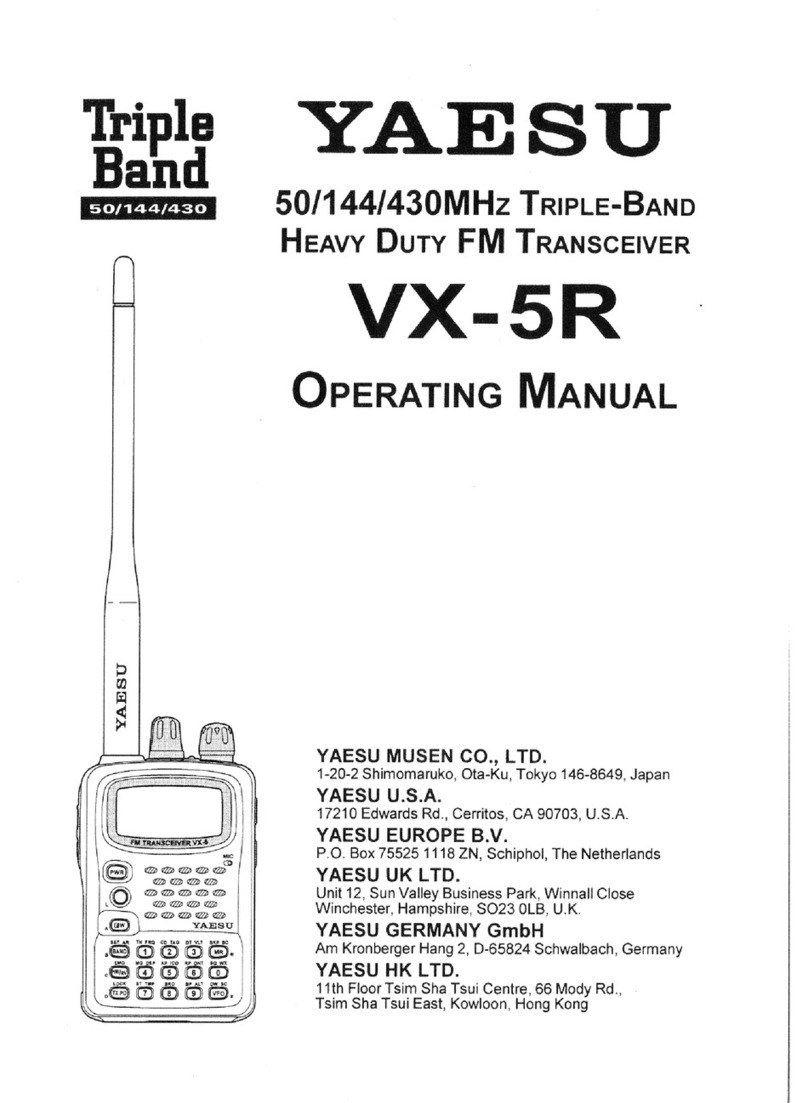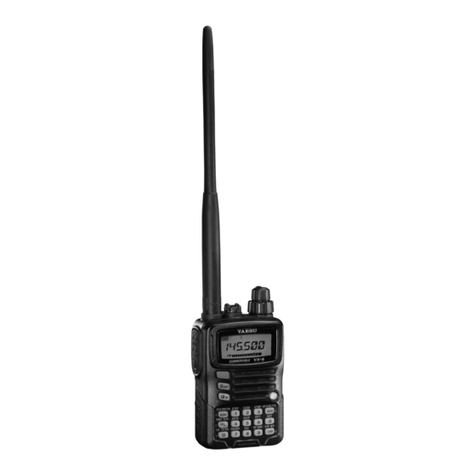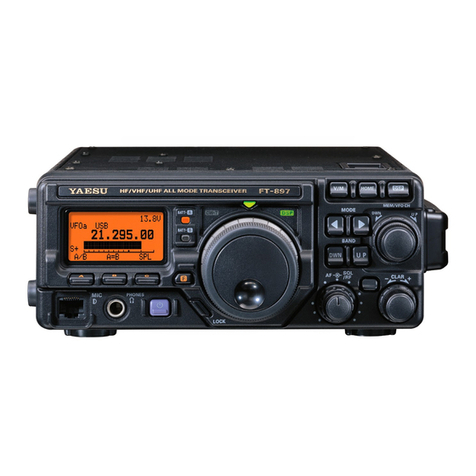
FT-991 OperaTing Manual
Table of ConTenTs
Table of Contents ......................................................... 1
Accessories & Options ................................................. 3
Supplied Accessories................................................ 3
Available Options ..................................................... 4
Adjusting the Clock.................................................. 5
Resetting the Microprocessor................................... 5
Installation and Interconnections............................... 6
Antenna Considerations ........................................... 6
About Coaxial Cable ................................................ 6
Grounding................................................................. 7
Connection of Antenna and Power Cables............... 8
Connection of Microphone and Headphone............. 9
Key, Keyer, and Computer-Driven Keying
Interconnections ..................................................... 10
VL-1000 Linear Amplier Interconnections.......... 11
Interfacing to Other Linear Ampliers................... 12
Front Panel Controls & Switches ............................. 13
Display Indications..................................................... 18
Rear Panel................................................................... 21
MH-31A8J Microphone Switches............................. 23
Optional FH-2 Switches............................................. 24
Basic Operation: Receiving on Amateur Bands...... 25
Operation on 60-Meter (5 MHz) Band (U.S. version
only) ....................................................................... 28
CLAR (Clarier)Operation ................................... 29
LOCK..................................................................... 30
DIMMER ............................................................... 30
VFO COLOR ......................................................... 30
Band Stack Operation............................................. 31
C.S (Custom Switch).............................................. 31
Convenience Features................................................ 31
SCOPE ................................................................... 32
More Frequency Navigation Techniques ............... 33
Receiver Operation (Front End Block Diagram)... 34
ATT (
).................................................. 35
Interference Rejection ............................................... 35
IPO (Intercept Point Optimization)........................ 36
IF Noise Blanker (NB)Operation .......................... 37
CONTOUR Control Operation .............................. 38
IF SHIFT Operation (SSB/CW/RTTY/PKT
Modes).................................................................... 39
WIDTH (IF DSP Bandwidth)Tuning (SSB/CW/
RTTY/DATA Modes)............................................. 40
NARROW (NAR)One-Touch IF Filter
Selection................................................................. 41
IF NOTCH Filter Operation (SSB/CW/RTTY/
DATA/AM Modes)................................................. 42
Digital NOTCH Filter (DNF)Operation................ 43
Digital Noise Reduction (DNR)Operation............ 43
Tools for Comfortable and Effective Reception ...... 44
RF Gain .................................................................. 44
Audio Peak Filter ................................................... 45
AGC (Automatic Gain Control)............................. 46
Adjustable Receiver Audio Filter........................... 47
SSB/AM Mode Transmission .................................... 48
ATU Operation ....................................................... 50
Using the Automatic Antenna Tuner ........................ 50
About ATU Operation ............................................ 51
P
ArAmetric microphone equAlizer
) ...................................................................... 52
Enhancing Transmit Signal Quality......................... 52
Using the Speech Processor (SSB Mode).............. 54
Adjusting the SSB Transmitted Bandwidth (SSB
Mode) ..................................................................... 55
Voice Memory (SSB/AM/FM modes: Requires
optional DVS-6 and FH-2)................................ 56
Transmitter Convenience Features .......................... 56
VOX (SSB/AM/FM Modes: Automatic TX/RX
Switching using Voice Control) ............................. 58
MONITOR (SSB/AM/FM modes)......................... 59
Split-Frequency Operation ..................................... 60
Setup for Straight Key (and Straight Key emulation)
Operation................................................................ 61
CW Mode Operation ................................................. 61
Using the Built-in Electronic Keyer....................... 62
CW Spotting (Zero-Beating).................................. 65
CW Convenience Features ........................................ 65
CW Delay Time Setting ......................................... 66
Contest Memory Keyer (Using the Optional FH-2
Remote Control Keypad) ....................................... 67
Basic Operation ...................................................... 72

